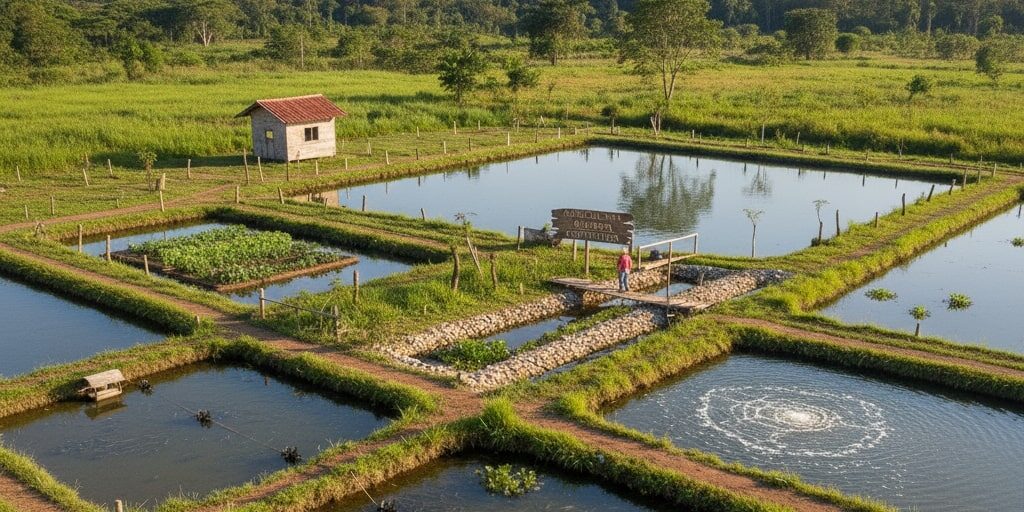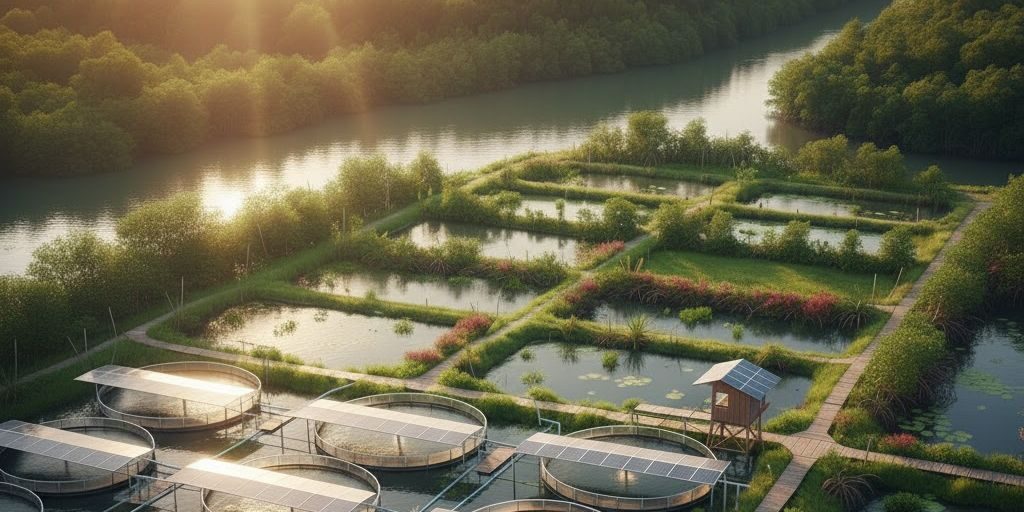- Software Gestor para Aquicultura
- (85) 2139-6730
- contato@despesca.com.br
Organic Aquaculture: What It Takes to Produce and Certify Your Shrimp or Fish

Genetic Improvement in Aquaculture: The Foundation for High Productivity and Health on Your Farm
04/09/2025
Blockchain in Aquaculture: The Technology that Ensures Full Traceability and Adds Value to Your Product
09/09/2025The consumer market is increasingly demanding, seeking products that are not only healthy but also produced ethically and in an environmentally responsible manner. In this scenario, organic aquaculture emerges as a valuable opportunity for shrimp and fish producers who wish to differentiate their product, access higher-value markets, and strengthen the sustainability of their operations.
But what does it really take to adapt to this production model and obtain the coveted organic certification? The process involves a restructuring of management, focusing on the balance of the ecosystem and animal welfare, requiring strict control of all stages of the cycle.
What Defines Organic Aquaculture?
Unlike conventional systems, organic aquaculture is based on principles aimed at the sustainability of the culture in all its dimensions. It is defined by the prohibition of synthetic inputs, such as chemical fertilizers, pesticides, antibiotics, and growth-promoting hormones. The focus is on disease prevention, respect for the natural behavior of the species, and maintaining the quality of water and soil, considering the farm as a living, integrated organism.
Key Requirements for Organic Production
To transform a conventional farm into an organic production unit, the producer needs to comply with a series of technical criteria established by certification standards. The main pillars are:
- Water Quality and Farm Location: The production unit must be located in areas free from contamination by pesticides or industrial waste. Water must be sourced from verifiably clean sources, and effluent discharge must be treated so as not to impact the local environment.
- Origin of Post-Larvae and Fingerlings: Production should preferably start with young forms (shrimp post-larvae or fish fingerlings) from certified organic broodstock. If not available, the standards allow the acquisition of animals from conventional systems, provided they undergo a conversion and purification period on the organic farm.
- Feeding and Nutrition: This is one of the most critical points. The feed provided to the animals must be composed mainly of certified organic ingredients. The use of Genetically Modified Organisms (GMOs), terrestrial animal by-products, synthetic dyes, and appetite stimulants is prohibited. Nutrition should aim for the natural health and resistance of the animals.
- Health Management and Animal Welfare: Prevention is the key word. The prophylactic use of antibiotics and other allopathic drugs is forbidden. Disease control must be achieved through good management practices, the use of probiotics, prebiotics, phytotherapeutics, and, in the case of fish, vaccines authorized for use in organic systems.
- Stocking Density: The stocking density in ponds and tanks must be lower than that practiced in conventional intensive systems. This ensures more space for the animals, reduces stress, improves water quality, and decreases competition for food, directly contributing to the well-being and health of the stock.
- Sustainability and Environmental Impact: The producer must present an environmental management plan that includes waste management, the preservation of native vegetation areas around the farm, and the conservation of local biodiversity.
The Certification Process: Step by Step
Obtaining the organic seal is the validation that the farm complies with all the standards. The process generally follows these steps:
- Choosing a Certifier: The first step is to hire a certification body accredited by the Ministry of Agriculture, Livestock, and Food Supply (MAPA).
- Documentation and Adaptation: The producer must develop a detailed Organic Management Plan and adapt all farm practices to the legal requirements.
- Audit and Inspection: The certifier conducts a detailed technical visit to verify that the practices described in the plan are being strictly followed in the field.
- Issuance of the Certificate: If the farm is in compliance, it receives the organic conformity certificate, which authorizes the use of the Brazilian System for the Evaluation of Organic Conformity Seal on its products.
How Management Software Facilitates Organic Certification
The main requirement of a certification process is traceability. The producer must prove, with precise data, the origin of each input, the management applied in each pond, and the history of each batch. Doing this control manually is complex and prone to errors.
This is where a management software like Despesca becomes an indispensable tool. With it, the producer can:
- Record the Origin of Inputs: Control the stock of organic feed, probiotics, and other permitted inputs, recording batches, suppliers, and invoices.
- Monitor Parameters and Management: Daily log water quality data, biometrics, feeding, and any health occurrences, creating a complete and reliable history for each pond.
- Ensure Batch Traceability: Track the development of the animals from the arrival of post-larvae/fingerlings to harvest, generating detailed reports that are crucial for audits.
- Analyze Costs and Viability: Even in an organic system, financial control is vital. The software helps to accurately calculate production costs, ensuring the economic sustainability of the business.
The transition to organic aquaculture is a strategic investment that requires planning, discipline, and impeccable data control. By combining good management practices with management technology, the producer not only facilitates obtaining certification but also builds a more resilient, sustainable, and profitable operation.




